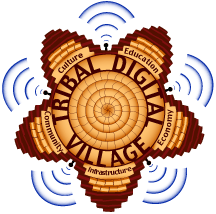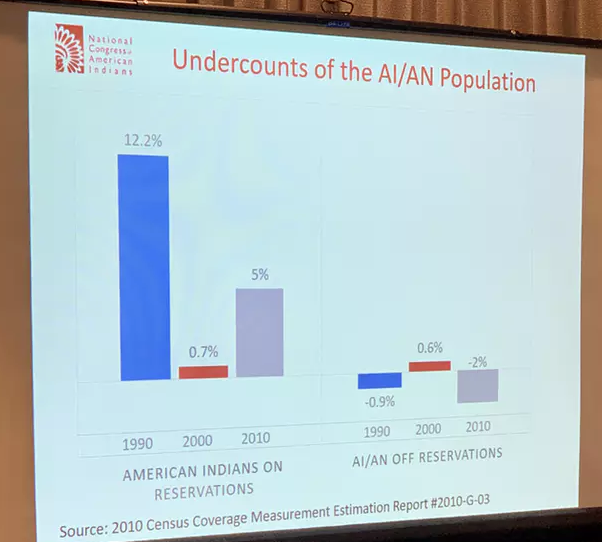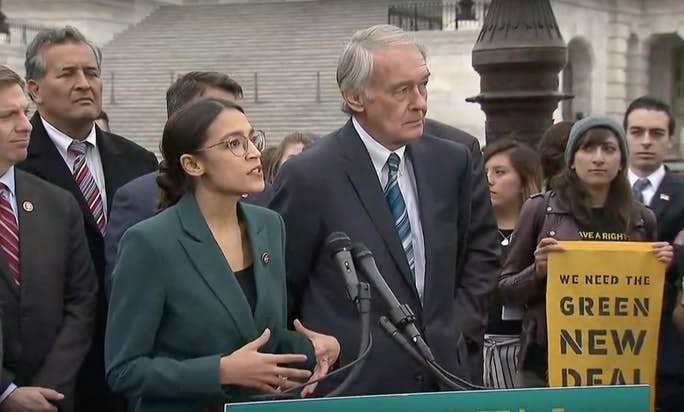NCAI kicks off anniversary with family memories
by Jourdan Bennett-Begaye Oct 23
Juanita Ahtone, Kiowa, pulls out the 1944 photo of the founding members of the National Congress of American Indians. She points to a man in the back row. That’s my dad,” she said.
The 90-year-old remembers her father, James Daugomah, coming home from his first NCAI meeting. Ahtone was 16 at the time. Her father sounded “enthused” about this meeting so she decided to listen. “He was talking about a great meeting he went to with all these tribal leaders from different tribes from different parts of the country,” she said.
Those 67 members from 50 tribes and 27 states met to establish what is now known as the National Congress of American Indians in 1944. This week the organization celebrates their 75th birthday at their annual convention in Denver, the same city the organization was founded in.
The political organization rose during “the beginning of an era, the termination era … the attempt to completely terminate federally-recognized tribes, became the greatest threat to tribal sovereignty in the 20th century,” wrote Thomas W. Cowger in his book, “The National Congress of American Indians: The Founding Years.”
Ahtone said the organization went through many names, but she wouldn’t say.
She does have the minutes of that first meeting. “It’s interesting to read those old minutes,” she said. Her father, a Kiowa leader, passed away when she was 18 from a brain tumor operation.
Years later her mom handed her an invitation sent to charter members. She told Ahtone, “Here. This came for your dad. You like things like this.”
The 1973 convention was in Dallas, Texas. And many of those founding board members from the first NCAI photo were still active when she attended her first convention in 1973.
Those who have been part of the convention for years referred to Ahtone as a “walking history book” or a celebrity. Attendees often stopped by the volunteer booth to say hello and give her a hug on their way to register. After a parade of people, she turned and said she remembers many of them from their younger years.
In her 45 years of continuous involvement, the NCAI celebrity held various positions, such as the recording secretary and the regional vice president of the southern plains. She still holds her title as the resolutions chairperson since 1983 and the chair of the election committee since the 90s.
Her first title with NCAI was the pageant coordinator. Yes, that was a part of conventions until 2006 and many remember it as “one of the highlights.”
The big highlight or elephant in the room are the whispers being thrown around about the organization’s executive director Jacqueline Pata being placed on administrative leave Saturday evening. Board officers declined to elaborate but referred to the official statement about the action.
NCAI established an ad hoc committee made up of tribal leaders who will “review how allegations of staff misconduct have been addressed previously by the organization.” While the review is going on, three senior leadership staff will lead the organization – Senior Advisor Virginia Davis, General Council Derrick Beetso and Policy Research Center Director Yvette Roubideaux.
President Jefferson Keel gave a statement to the room during the general assembly addressing the administrative leave of Pata and NCAI’s workplace environment. He said they want to put a stop to the “gossip” and “innuendos” that “can do harm to this organization and American Indians across the country.”
“I want to assure our membership, our staff, our partners and Indian Country public that NCAI’s taking this situation very seriously,” he said. The organization is working toward a “final solution” as they want to create a “safe and supportive workplace.”
Instead of the current leadership whispers, back then it was all about who would win the scholarship pageant.
Pageant contestants needed to be at least 18 to 24 years old, female, and be sponsored by a tribe. The scholarship pageant happened in the evenings for the entire week of the convention. Judges scored contestants on their tribal history, ability to speak their own language, modern and traditional dress, talent, and knowledge of modern issues. The point of the role was to be a youth ambassador for the organization.
Susan Savage, Dine, was third runner-up at the Dallas convention in 1973 out of approximately 20 contestants. She remembers Ahtone helping them out. By the way, here at the convention was the first time Savage has seen her former pageant coordinator.
“She took all of us young women under her wing,” she said. “She was very encouraging. She stressed how important maintaining our culture is, and sharing it. How to respect ourselves. She was amazing and embraced all of us.”
It’s been a long time since. One change she has seen is technology.
“Technology has made a huge difference” in how the organization has “morphed” and “blossomed,” Savage said. Rural areas have access to this national organizations to let there issues be heard.
During the pageant contestant in her youth, she remembers a few people from grass-roots organization being in an elevator with her. “These guys were talking, ‘Yeah! We worked on this from the grass-roots level and now we’re here at the national level. We want to be recognized.”
It was the Siletz tribe in Oregon, now known as the Confederated Tribes of Siletz Indians. The Western Oregon Termination Act terminated their tribes in 1955. They were the second tribe in the country to receive full federal recognition in November of 1977.
Yvonne A. Oberly agrees with Savage about the role of technology. Back then, leaders would leave with 12 big binders full of documents. Now leaders get everything on their flash drive or online. However, people still ask for paper and she happily obliges.
With technology serving as the right-hand man of Indian Country, leaders now attend the convention more prepared to talk about present issues.
“You see more of the leaders coming in who are very knowledge and very passionate about certain topics that they’re bringing to the conference, especially in the form of resolutions. Not to criticize past leaders, but it seems like the debates now are really, really informative. It seems like the leaders know what they’re talking about,” she said. “Technology has allowed a lot more knowledge. Back then if you wanted to do background information, you were at the library looking at microfiche files. Now you can Google anything.”
Oberly laughed when asked her about her days as Miss NCAI 1989-90. She won by doing American Sign Language to the Lord’s Prayer. At 21 years old she traveled to speaking events, youth conference, the Gathering of Nations, Oklahoma, the National Indian Education Association, and many powwows.
“The pageant is something I always wanted to do,” she said and it pulled her in to be part of the rules and credentials committee for 19 years, a position her great aunt once held. Her parents were also involved. You can say NCAI is in her blood.
But she credits her grandma for her first exposure to NCAI.
That’s when Oberly’s grandma participated in the frybread-making contest. Of course, as a young high-school student and grandma’s child, she thought she should’ve won. (Can you imagine the smell of frybread at a national convention? They should bring it back.)
From frybread-making contests to pageants, the convention has evolved over 75 years. That same passion from tribal leaders in 1944 has spread down to the youth.
The pageant eventually evolved to become the youth council that now has two ambassadors, male and female.
Former youth ambassador Quintin Lopez, Tohono O’odham, had ties to the youth council since he was 16. Ahtone said she’s seen him grow up. He’s 29 and serves as the alternate vice president for the western region.
Why the change for the youth? Lopez said they wanted their voices to be considered on a different level.
“They wanted to be part of the advocacy and wanted their voices to be heard,” he said.
Elders offer a unique perspective on Native issues and youth offer another, he said. When you put them together, they can be powerful.
Lopez makes a good point about the debates and tough issues at a politically-focused conference, you make new friends and see old ones. Even though the week is exhausting, “each day is a new day each day and no one holds grudges.”
Jourdan Bennett-Begaye, Diné, is a reporter/producer for Indian Country Today in Washington, D.C. Follow her on Twitter @jourdanbb. Email:jbennett-begaye@indiancountrytoday.com
Indian Country Today will stream a live coast-to-coast newscast on election day partnering with FNX / First Nations Experience and Native Voice One. The newscast will begin at 6 p.m. Pacific / 9 p.m. Eastern.





Comments are closed here.